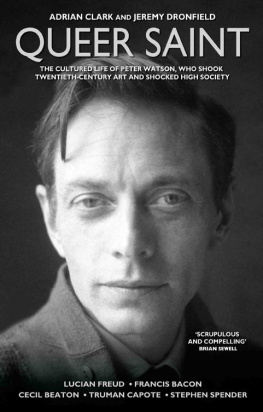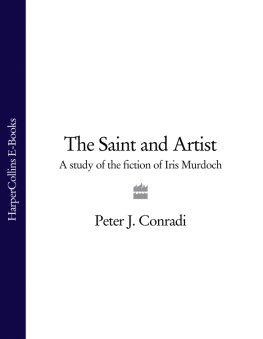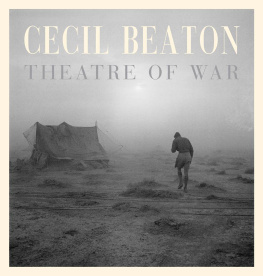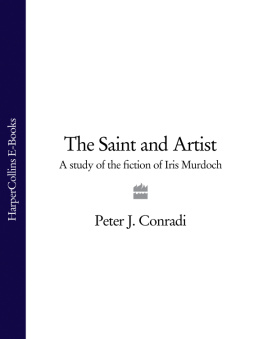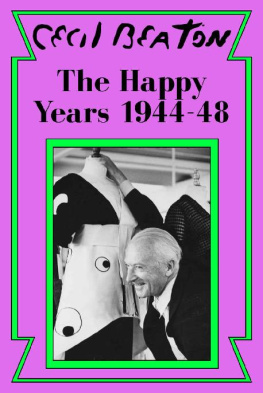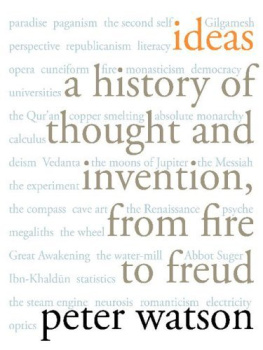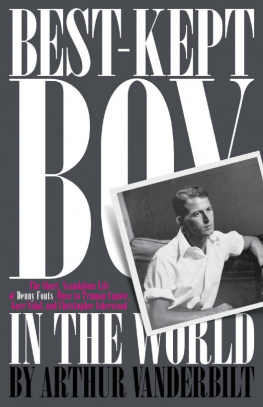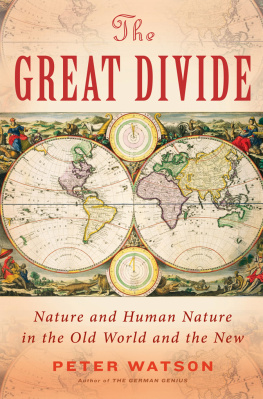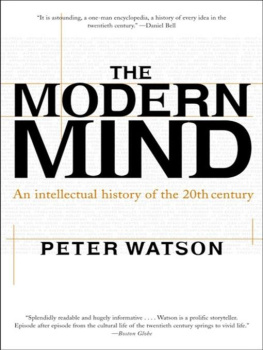Extracts from the letters and diaries of Cecil Beaton The Literary Executors of the late Sir Cecil Beaton, 2015. Reproduced by kind permission.
Extracts from Voice From a Skull and On the Photograph of a Friend, Dead by Stephen Spender, from New Collected Poems (Faber and Faber) 2004. Reprinted by kind permission of the Estate of Stephen Spender.
W riters of biographies incur many debts. The principal debt here is to Professor Michael Shelden. He helped throughout the process, in ways which far exceeded anything one could have expected, providing information, advice, and material from his extensive Horizon-related archive. We are also very grateful to Hugo Vickers and Thomas Messel; they were extremely generous with their time and encouragement early on in this project.
Charles Rickett provided comments on Eton; as an Old Etonian himself, he saved us from committing any egregious blunders, as did Michael Meredith and Penny Hatfield from the Eton archives. Brian Sewell read Adrians early drafting notes and provided insights which helped shape his thinking on Peter Watson.
From the Watson family, we should like to thank Peter Watsons great-nephew, Alasdair Nagle, who responded with great patience and courtesy to many detailed enquiries. Sir Rodney Touche, biographer of Peters brother Sir Norman Watson, was also particularly helpful.
It is impossible to thank in detail all of the many individuals, institutions and libraries around the world that have helped. We would, however, particularly like to acknowledge the Master and Fellows of St Johns College, Cambridge, for providing access to the letters and diaries of Sir Cecil Beaton; many visits were required as we wrestled with Beatons atrocious handwriting; St Johns librarians Kathryn McKee and Mandy Marvin were exceedingly generous in giving practical help with the materials. Extracts from the letters of Lord Berners are used by permission of the Berners Trust, for which we are grateful. Information and photos were generously provided by Nancy Templeton, great niece of Waldemar Hansen. Dr Chris Fletcher, Keeper of Special Collections, Bodleian Library, University of Oxford, gave permission for use of material from the Stephen Spender papers; the Estate of Stephen Spender kindly gave permission to quote from these materials and from Spenders published poems. Professor Jonathan Gosling gave permission for use of material from the Keith Vaughan archive.
Michael Riordan of St Johns College, Oxford, was very helpful in tracing Peter Watsons university career. Marc Masurovsky answered a number of enquiries on the workings of the Nazi ERR.
Vital archive material was provided by Chris Bastock (Tate Library), Beinecke Rare Book and Manuscript Library (papers of James Lord and Edith Sitwell), Michael Bloch (James Lees-Milne estate), Stephane Boudin-Lestienne (Association Villa Noailles), Ana Maria Bresciani (Henie Onstad Kunstsenter, Oslo), Sabine Coron (Sorbonne), Rebecca Daniels and Martin Harrison (Francis Bacon estate), Xavier Demolon (Tal-Coat committee), Elena Engelbrechter (Kurt Schwitters Archive), Vibeke Espholm (Nordic Library, Athens), John and Marilyn Gerry (Bushey Museum), Mary Gifford (Berners Trust), Emma Harrold (Oxford University Archives), Oliver Herford (Stephen Spender Trust), Moraiti Ionna (Benaki Museum, Athens), Stephanie Irlen (Neues Stadtmuseum, Landsberg), Christina Jansen (Scottish Gallery), Sharon-Michi Kusunoki (Edward James Foundation), Gemma McCallion (Public Record Office of Northern Ireland), Charlotte McKillop-Mash (Stephen Spender papers, Bodleian Library), Alexis Marotta (Calder Foundation), Roger Nougaret (BNP Paribas Archives), Michael Phipps (Henry Moore Foundation), Jennifer Ramkalawon (British Museum), Diana Rawstron (Lucian Freud estate), Richard Riley (John Craxton estate), Dr Maria Teresa Tosi (Fondazione Marino Marini) and Renate Wuersch (Universitt Basel).
The following kindly answered Adrians questions regarding Norman Fowlers activities in the British Virgin Islands and Nevis: Dr J. S. Archibald, Julian Clarke (who was hugely generous and helpful in particular by putting Adrian in touch with others), Steve Dickinson, John Everitt, Penny Haycraft, Vincent Hubbard, Michael ONeal, Dr Alson Percival, Christopher Varlack and Dr Pearl Varlack.
The following people also helped in all sorts of ways: Edward Allcard gave an account of his transatlantic voyage with Norman Fowler, and Alexander Fitzroy-Clarence (formerly Alex Leslie) described in fascinating detail his relationship with Peter Watson; advice, information and feedback were received from Oliver Bernard, Sandra Boselli, David Clare, Ian Collins, the late John Craxton, William Cross, Charles Duff, Anne Dunn, Patrick Elliott, William Feaver, Clive Fisher, Jonathan Gathorne-Hardy, Jonathan Gibbs, Victoria Glendinning, Richard Greene, the late Richard Hamilton, Martin Hammer, Lady Selina Hastings, Gill Hedley, Anthony Hepworth, Michael Holzman, Justine Hopkins, Richard Lannoy, Jeremy Lewis, Andrew and Angela Lownie, Nigel Macdonald, Muriel Marseille, Jean-Yves Mock, Jeremy Musson, Melanie ORourke, Janetta Parlade, Antony Penrose, Michael Peppiatt, John Powell, David Pryce-Jones, John Richardson, Fred Sharf, Dr James Smith, Matthew Spender, David Taylor, Professor Mark Watson-Gandy, Francis Wheen, Professor Brian Whitton and Sofka Zinovieff.
We are both grateful to our agent, Andrew Lownie, for bringing us together, and to Anna Marx at John Blake Publishing for believing in the book.
Finally, Adrian would like to thank his long-suffering wife and daughters for putting up with the spirit of another man in the house; they now know more about Peter Watson than they could possibly want to.
Some are, and must be, greater than the rest,
More rich, more wise; but who infers from hence
That such are happier, shocks all common sense.
Alexander Pope, An Essay on Man, Epistle IV
I n New Yorks Museum of Modern Art there is a strange and haunting portrait of Peter Watson. It was painted by Alberto Giacometti in Paris in 1953, three years before Watsons death. The picture seems to hint at the sitters impending mortality: the formally suited figure stretched, stiff, and blank-eyed translucent as a ghost.
There is a foreboding of doom in the picture; is this just hindsight, or was Giacometti seeing a true vision of his subjects future? Watson knew the artist well. Each day he put on his suit and tie and took a taxi from the Hotel Pont Royal, where he stayed whenever he was in Paris, and travelled to Giacomettis cramped, dirty studio at 46 rue Hippolyte-Maindron. Each day he had the same experience. Giacometti liked his sitters to come in the afternoon and stay late into the evening. We know from photographs of Giacometti at work that Watson would have been seated close to the painter, at an angle to his easel, facing the window so that the subdued light fell upon his face.
His view would have been of the detritus that characterised Giacomettis studio: half-finished plaster sculptures, some swathed in material to hide them from view; some raised on plinths; tall, mysterious sculptural presences on the studio floor; canvases stacked against the walls; an unused bed; a table cluttered with artists materials; the dirty window obscured by a loose piece of curtain. Behind Watson we can make out a broken door, or perhaps the stretchers on the backs of canvases.
Giacomettis portraits are hard and intense. He preferred subjects with whom he sensed some empathy, and his pictures were reflections of his own disturbed and depressed soul. So they do not suit all his sitters. There is no such mismatch in the picture of Peter Watson. Three short years away from his physical death, Watson appears in the artists vision of him already emotionally dead. He is a husk, both in the image and in the reality of his life as expressed through his letters. The emptied face, with its blank eyes, stares at the painter, and at us. Giacometti had found his subject.

